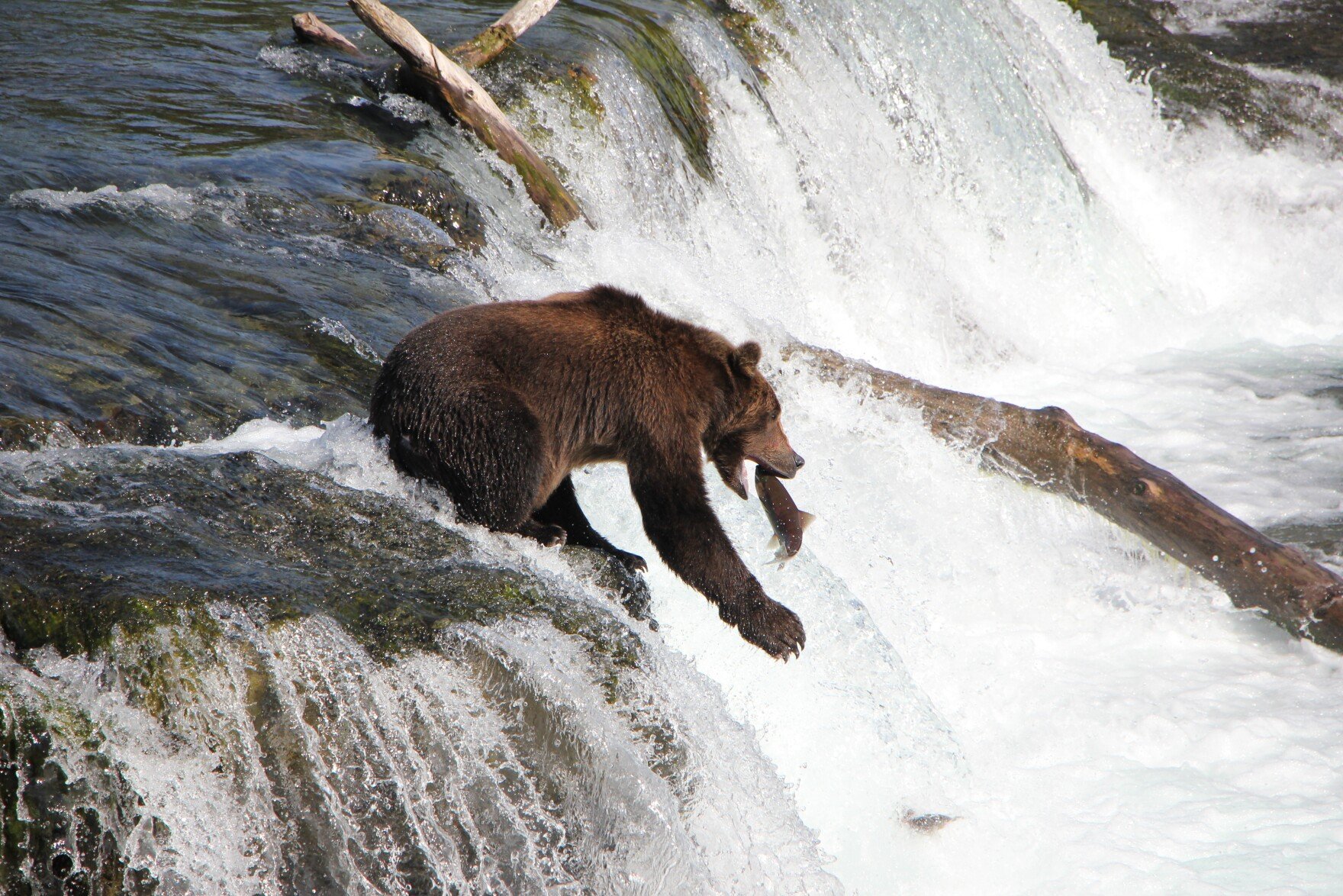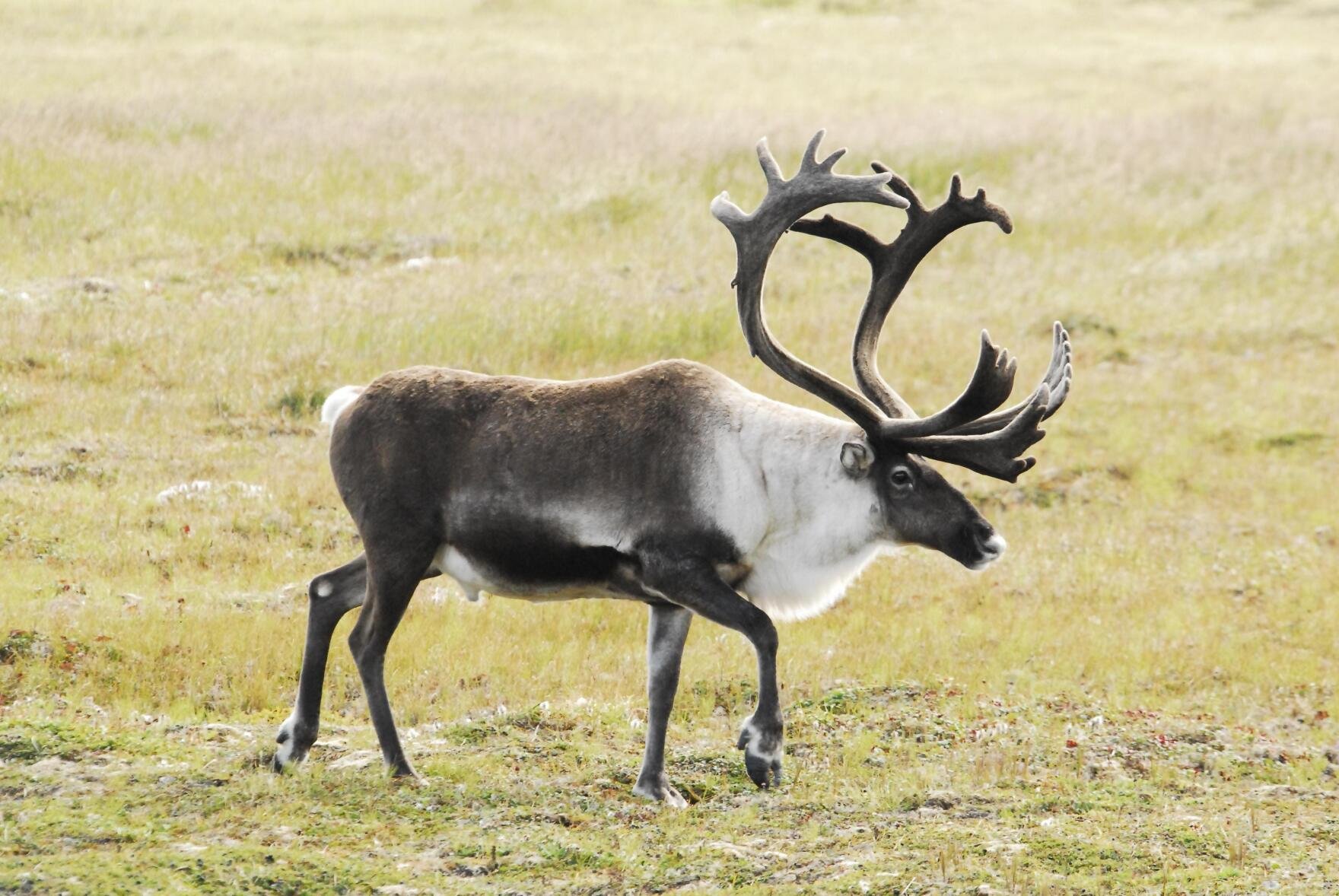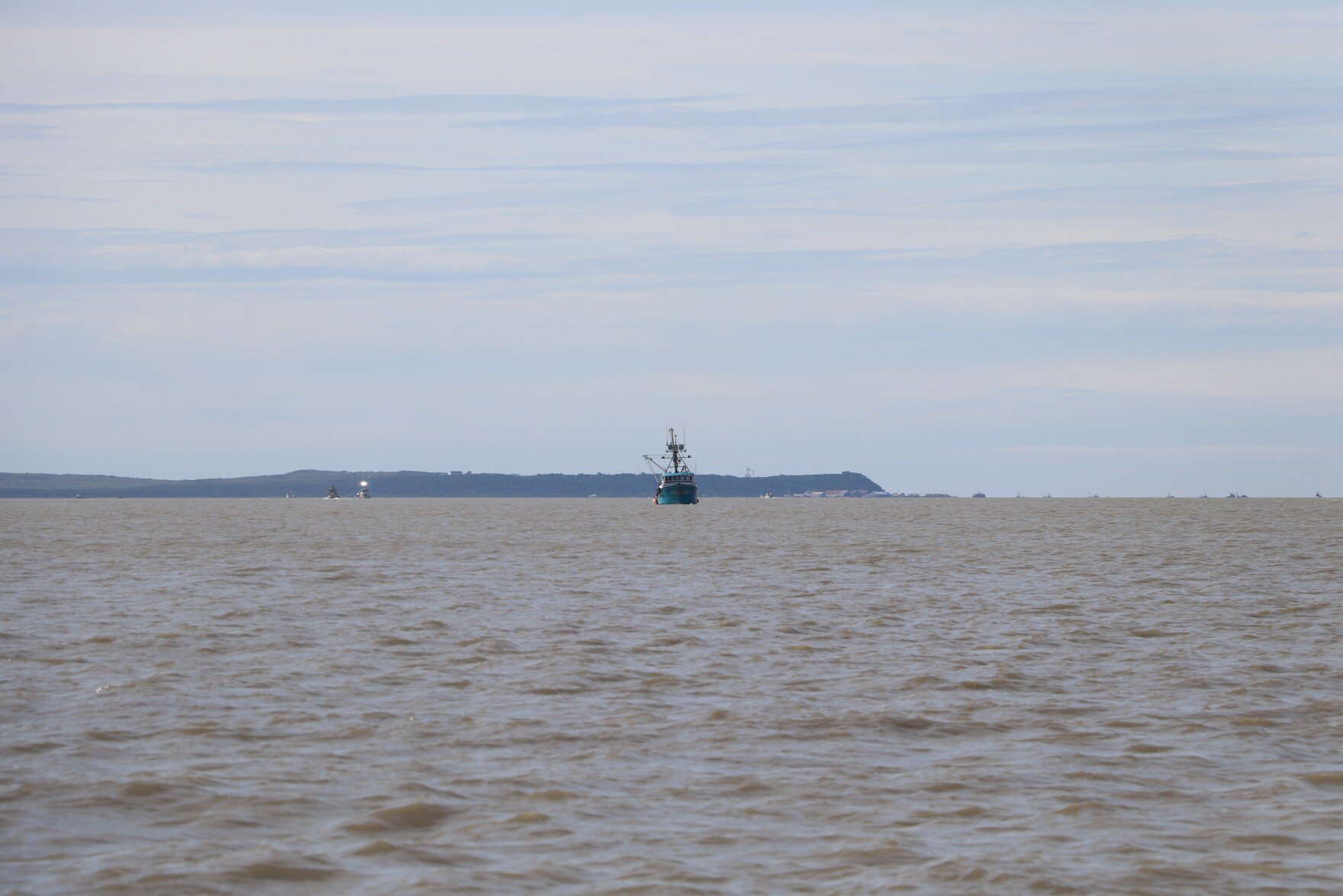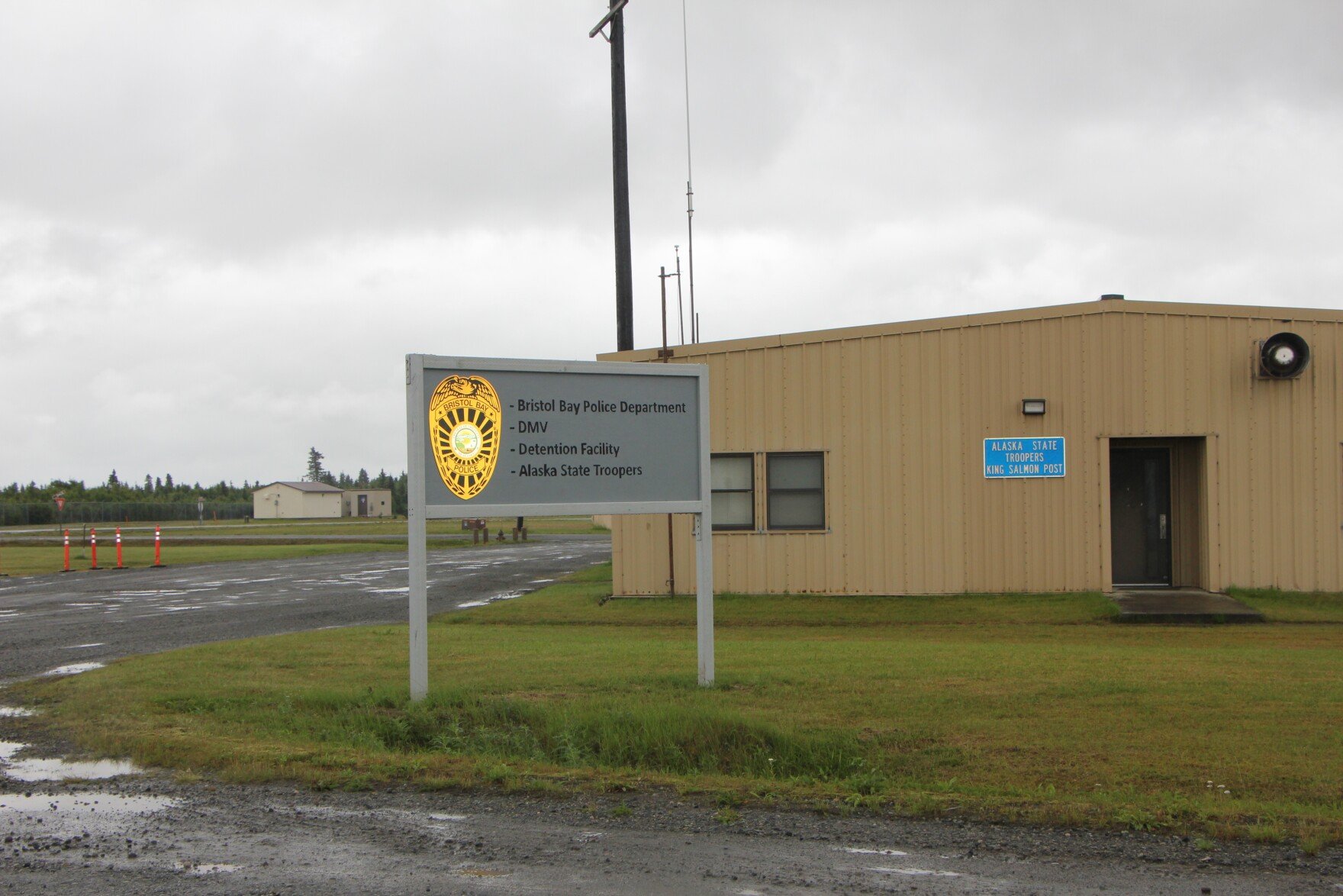Writing
During the summer of 2021, I had the opportunity to work for my hometown’s local (and only!) radio station, KDLG. Focusing primarily on the fishing industry in Bristol Bay, Alaska, my summer was spent reporting local news that translated well for both print and radio. Throughout the season, a handful of my stories were picked up by the statewide Alaska Public Media.

High water in Brooks River prompts partial closure in Katmai so bears can fish
Bears have a harder time fishing in deep waters of the Brooks River, and the park’s partial closure will give bears unhindered access to shallower waters.
Written by: Mackenzie Mancuso for KDLG // Photo by Izzy Ross
Katmai National Park and Preserve issued a temporary closure for a portion of Brooks River to allow the brown bears more access to the fishing grounds.
In an announcement, Park Superintendent Mark Sturm said the water levels in the Brooks River have been unusually high this year, and the bears have a harder time fishing in deep waters. This closure will give bears unhindered access to shallower waters.
The area is typically open to anglers, photographers, and tourists. Bears are most successful with their fishing without the interference or presence of humans. Leaving these waters open to humans could dissuade bears from fishing there.
The closure went into effect Tuesday afternoon and ends at 3 p.m. on Friday, though park officials may extend it. Park staff will also use the time as an opportunity to further study the bears’ eating habits, and how the closure affects them.
Sport fishing remains open throughout other areas of the Brooks river, including above the falls.

NOAA's first Tribal research coordinator aims to build partnerships with Indigenous communities
For the first time, the federal National Oceanic and Atmospheric Administration has a Tribal research coordinator. NOAA is a key federal leader of environmental research. Those involved say the new position is a step toward better representation for Alaska’s Indigenous communities.
Written by: Mackenzie Mancuso for KDLG // Photo Courtesy of Mabel Baldwin-Schaeffer
Mabel Baldwin-Schaeffer is the first Tribal coordinator for the Alaska Fisheries Science Center’s Communications Program.
She was born and raised in Kiana, a small Iñupiaq village on the Kobuk River in northwest Alaska, and said she will bring that perspective with her.
"Near and dear to my heart has always been to improve local participation and to engage rural communities and research development," she said. "I am most excited to work with Elders and local people in the community."
As a Tribal coordinator, Baldwin-Schaeffer will facilitate existing communication and outreach efforts to communities. She will also act as a liaison between NOAA and communities that rely on subsistence when scientific research takes place in the future.
"My job is to help enhance and strengthen research networks in order to build effective and helpful collaborative partnerships with Alaskan Indigenous communities," she said.
Baldwin-Schaeffer received her Bachelor’s degree in Sustainability Studies and a Master’s in Environmental Science from Alaska Pacific University.
She previously led a collaborative study on offshore gold mining and its effects on the environment -- specifically, on young red king crabs in the Norton Sound. The study aimed to understand the effects of the Kuskokwim Bay’s water temperatures on crabs and strengthen communications between Alaska Native communities and the commercial fishing industry.
Bob Foy, NOAA’s science and research director, said that the partnership with Baldwin-Schaeffer will benefit the organization and Indigenous communities across the state.
"Our goal with that position is to bring information into our fisheries and marine mammal management process that includes Indigenous knowledge," he said.
Baldwin-Schaeffer started in her new position as coordinator a couple months ago. She says she is working to establish contacts and recruit participants from diverse backgrounds and viewpoints to engage with NOAA’s projects.

Nushagak Peninsula caribou hunt is limited this season
The Nushagak Peninsula caribou hunting season is open for the 2021-2022 season, but harvest opportunities are limited.
Written by: Mackenzie Mancuso for KDLG // Photo Courtesy of Togiak Wildlife Refuge
There will be a limited harvest for the Nushagak caribou hunting season.
The population of the Nushagak caribou herd is estimated at 287. The Nushagak Peninsula Caribou Planning Committee determined that given this number, eight total caribou are available for harvest.
Four hunting permits will go to the Manokotak Village Council, and the Dillingham and Aleknagik Village Councils will receive two permits each. Permits will then be distributed by the Tribal councils.
The hunting period opened August 1 at 12 a.m., and closes April 15, 2022 at 11:59 p.m.
Open hunting units consist of the Nushagak Peninsula south of the Igushik River, Tuklung River, and Tuklung Hills, west of Tvativak Bay. Successful hunters are required to report their harvest within five days.
Federal managers suggest hunters should also review the permit conditions before heading out, as some portions of the units remain closed to caribou hunting.
For questions, contact refuge manager Kenton Moos at 907-842-1063.

Authorities identify man who died after fishing boat sinks in Nushagak
Authorities credit Good Samaritans on the scene with helping in the rescue of two other people on board.
Written by: Mackenzie Mancuso for KDLG // Photo by Stephanie Maltarich
A commercial fisherman has died after a vessel sank in the south end of Nushagak Bay on Thursday morning with three people on board.
Authorities on Friday identified the deceased as Lance Eric Norby, 45, of Arlington, Texas. He captained the F/V Pneuma. Norby's next of kin has been notified.
Alaska State Troopers report receiving a call around 5 a.m. Thursday morning that a commercial vessel was taking on water. Two wildlife troopers responded immediately. Before they got there, they heard reports that the three people on board were in the water.
Authorities credit Good Samaritans on the scene with helping in the rescue. Among those was skipper Caleb Mikkelsen, who said his crew was getting ready for an opener when he got a call from a friend that there was a vessel in distress on the VHF radio.
“We could hear that there were two boats and a skiff trying to help this vessel that was sinking out on those Snake River flats there,” he said.
The people at the scene said they still needed help. So Mikkelsen piloted his boat, the F/V Fortress, about seven miles to help.
“Pounded my boat through all the waves and stuff to get down there, and by the time I got there I realized the two boats were two deep tenders," he said. "They draft about 10 or 15 feet so they were practically useless. And then the skiff was a trooper skiff. And there were six- or eight-foot breaking curlers going on that bar.”
Mikkelsen said the troopers had one of the people in their skiff. By that time, the boat had fully submerged in breakers. So he and his crew started looking for the rest of the crew.
“You could barely see the skiff and I could barely drive my boat in the breakers," he said. "So we were driving around, I was just zig-zagging, had all my crew on the very top flying bridge of my boat, scouting out. And saw a buoy light, went for that, and one of the guys had the buoy light, was holding it. So we pulled him up on the jet guard.”
They found Norby and conducted CPR and attempted other life-saving efforts.
Coast Guard Petty Officer Nate Littlejohn said a Jayhawk helicopter arrived on scene.
“The coast guard lowered a rescue swimmer and determined that a third person was, in fact, deceased,” he said.
Littlejohn credited the Good Samaritan vessels with providing aid, and said it was a rough morning for everyone involved.
“It’s always difficult when we arrive on scene and find that it’s too late to save a life,” he said.
Littlejohn also thanked the Good Samaritans on the F/V Fortress and the F/V Last Frontier.
Mikkelsen said that after the ordeal, he and his crew were in shock, and talked about what had happened before they headed back out to fish for the rest of the day.
This story has been updated with the name of Lance Norby of Texas, and the name of the boat that sank, the F/V Pneuma.

Washington man indicted in Naknek hit-and-run incident
A Washington resident indicted by grand jury in Anchorage following July 21 hit-and-run of two pedestrians in Naknek.
Written by: Mackenzie Mancuso for KDLG // Photo by Mackenzie Mancuso
An Anchorage grand jury indicted 33-year-old Curtis Michael Chevalier last week for his role in a hit-and-run that killed two men in Naknek earlier this month.
The jury alleges Chevalier, a Washington resident, killed Timothy Jacob and Vincent Martin when he hit them with his car in the early hours of July 21 .
Jacob, who was 43, was from Napaskiak and died on impact, according to the Bristol Bay Police Department. Martin, who was 33 and from Anchorage, died shortly after the incident as first responders prepared to medevac him. Both victims were working in Naknek at the time of their deaths.
Chevalier is also charged with Failure to Render Aid and Driving Under the Influence. Police say he’s in custody with bail set at $200,000 cash performance, $50,000 cash appearance.
If convicted, Chevalier faces up to 40 years in prison. These charges are only allegations, and are not evidence of guilt. All defendants are presumed innocent until proven guilty beyond a reasonable doubt.